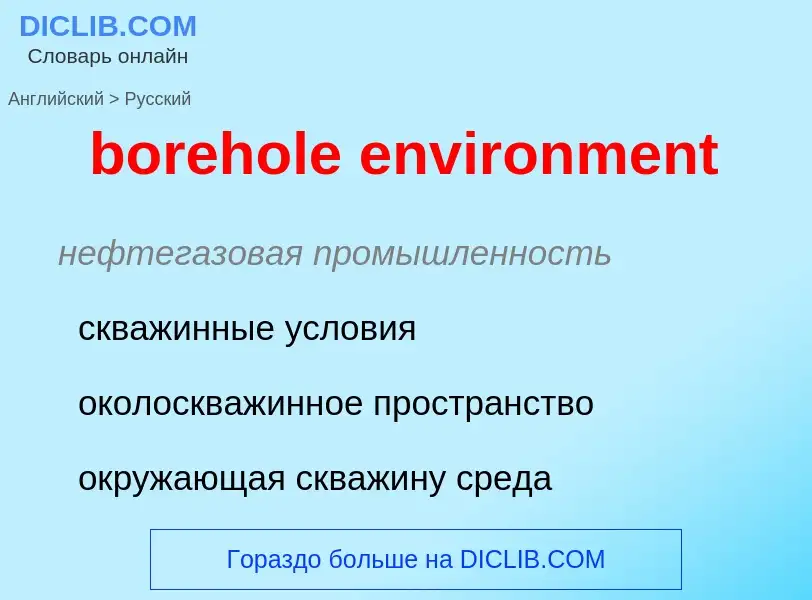Translation and analysis of words by ChatGPT artificial intelligence
On this page you can get a detailed analysis of a word or phrase, produced by the best artificial intelligence technology to date:
- how the word is used
- frequency of use
- it is used more often in oral or written speech
- word translation options
- usage examples (several phrases with translation)
- etymology
borehole environment - translation to russian
нефтегазовая промышленность
скважинные условия
околоскважинное пространство
окружающая скважину среда
общая лексика
физическая среда
физическая среда, условия работы (компьютера)
температура, влажность, давление (высота над уровнем моря), вибрация, излучения и т.д.
Wikipedia

The Kola Superdeep Borehole (Russian: Кольская сверхглубокая скважина, romanized: Kol'skaya sverkhglubokaya skvazhina) SG-3 is the result of a scientific drilling project of the Soviet Union in the Pechengsky District, near the Russian border with Norway, on the Kola Peninsula. The project attempted to drill as deep as possible into the Earth's crust.
Drilling began on 24 May 1970 using the Uralmash-4E, and later the Uralmash-15000 series drilling rig, and it became the deepest manmade hole in history in 1979. The 23 centimetres (9 in) diameter boreholes were drilled by branching from a central hole. The deepest reached 12,262 metres (40,230 ft; 7.619 mi) in 1989, the deepest human-made hole on Earth, and remains so as of 2023.
In terms of true vertical depth, it remains the deepest borehole in the world. For two decades, it was also the world's longest borehole in terms of measured depth along the well bore (that is, borehole length) until it was surpassed in 2008 by the 12,289 metres (40,318 ft) long Al Shaheen Oil Well in Qatar.


![USSR]] stamp USSR]] stamp](https://commons.wikimedia.org/wiki/Special:FilePath/1987 CPA 5892.jpg?width=200)



